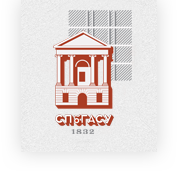An Exploration of Philip’s Upbringing in Of Human Bondage
DOI:
https://doi.org/10.63313/ah.9013Keywords:
Growing Up, Philip, Bondage, Erickson’s Theory Of Stages Of Psychosocial Devel-OpmentAbstract
Of Human Bondage is a growing-type novel, which tells the story of the com-plete life process of the protagonist Philip from childhood to marriage, finding freedom in the shackles of family, love, friendship, campus, art and ideals. His upbringing was full of struggles. The physical defects, the loss of parents from childhood, the road to study is bumpy, and the face of many difficulties in love. Every step of his life is a testament to his freedom from bondage. This paper mainly interprets Philip’s growth experience from the perspective of Erikson’s personality development theory and analyzes how he continues to mature psy-chologically and emotionally, and finally obtains inner freedom and peace, as well as the personality characteristics presented in different life stages. At the same time, combined with the literary classic of the theme of growth, this paper discusses the profound enlightenment about human nature, growth and the meaning of life shown in the novel, which provides guidance and thinking for us when facing the difficulties of life.
References
[1] Ettehadi, A., & Sistani, R. R. (2017). Psychoanalytic reading of love and desire in Somerset Maugham’s Of Human Bondage. Studies in English Language Teaching, 5(1),58.
https://doi.org/10.22158/selt.v5n1p58
[2] Erickson, E. (2021). Identity and the Life Cycle. World Book Publishing Company
[3] Ji, X. H. (2017). Bondages of the protagonist Philip Carey in Maugham’s Of Human Bond-age and his long pilgrimage towards freedom. In 4th International Conference on Education, Language, Art and Intercultural Communication (ICELAIC 2017) (pp. 482-490). Atlantis Press.
https://doi.org/10.2991/icelaic-17.2017.109
[4] Kesavelu, D., Sheela, K., & Abraham, P. (2021). Stages of psychological development of child-an overview. International Journal of Current Research and Review, 13(13), 74-78. https://doi.org/10.31782/IJCRR.2021.131320
[5] Knight, Z. G. (2017). A proposed model of psychodynamic psychotherapy linked to Erik Erikson’s eight stages of psychosocial development. Clinical psychology & psychothera-py, 24(5), 1047-1058.
https://doi.org/1047-1058. 10.1002/cpp.2066
[6] Maugham, S. (2007). Of Human Bondage. Signet Classics.
[7] Patiño-Lakatos, G. (2019). Trace and memory of trauma: From bodily memory to symbol-ic memory. L’Évolution Psychiatrique, 84(3), 45-58. https://doi.org/10.1016/j.evopsy.2019.05.002
[8] Timm, J., Block, H., Boanca, G., & Acquaye, H. E. (2020). An exploratory study on the rela-tionship between completion of Erikson’s fourth psychosocial stage and assurance of sal-vation. Journal of Spirituality in Mental Health, 24(1), 53-73. https://doi.org/10.1080/19349637.2020.1798326
[9] Tiozzo, P. (2021). William Somerset Maugham and the Nobel Prize. Nordic Journal of Eng-lish Studies, 20(1), 127-154.
https://doi.org/10.35360/njes.556
[10] Wijaya, S. (2022). The roles of parents teachers association in school-age children’s psy-chosocial development according to Erik Erikson. Edunesia: Jurnal Ilmiah Pendidikan, 3(1), 45-54.
Downloads
Published
Issue
Section
License
Copyright (c) 2025 by author(s) and Erytis Publishing Limited.

This work is licensed under a Creative Commons Attribution-ShareAlike 4.0 International License.















